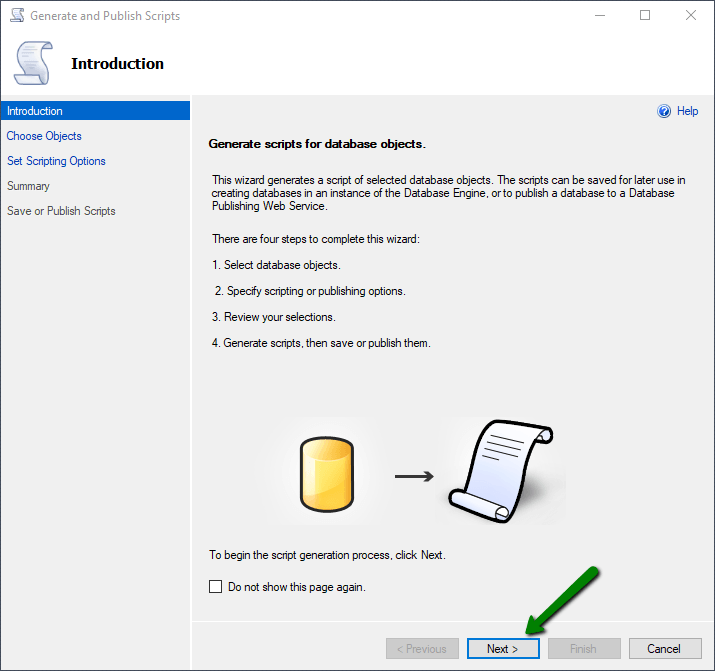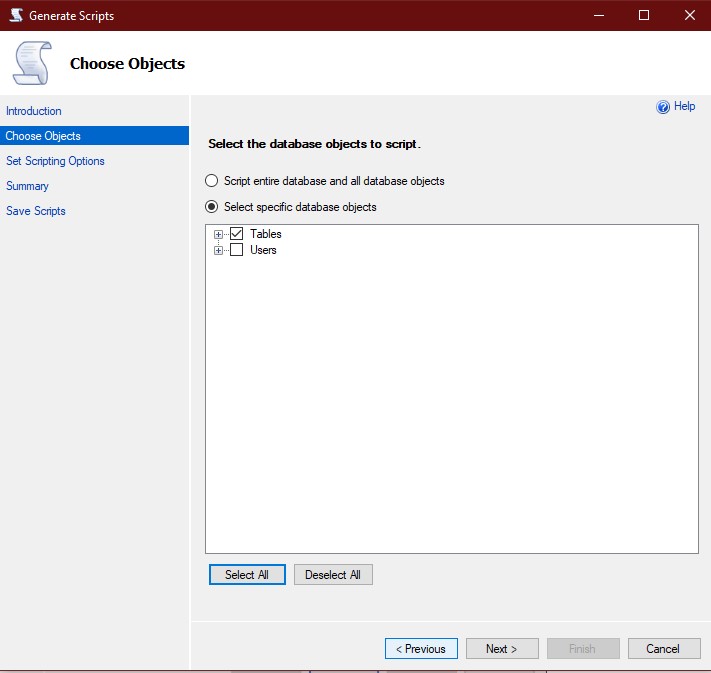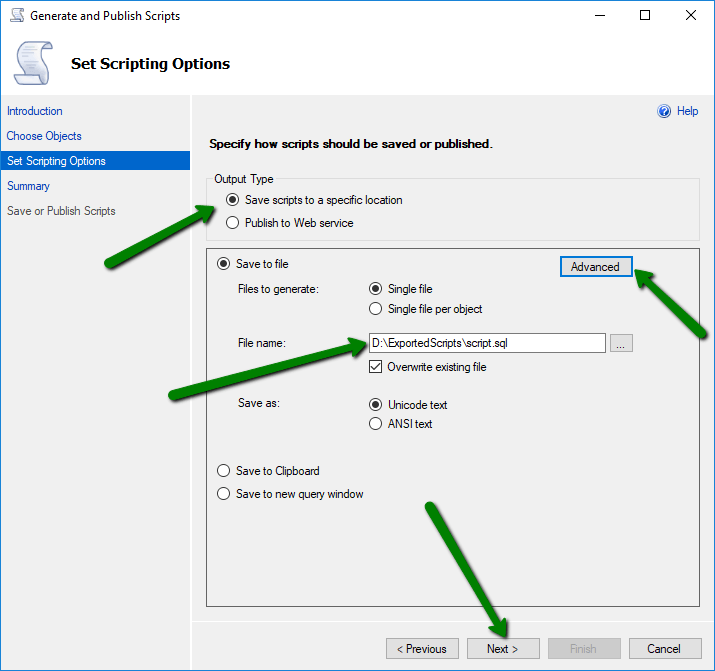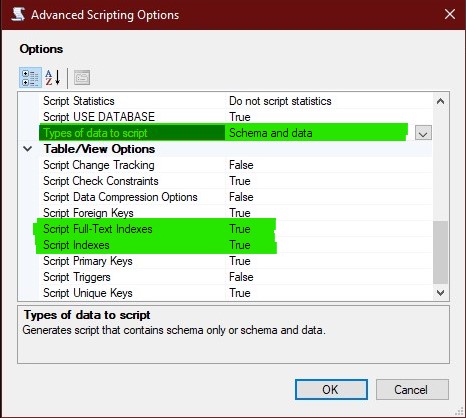You will need to export your database using Generate Scripts with some advanced settings configured for the restore to complete successfully.
Alternatively you may find it easier to request us to restore your database using a bacpac file, or directly from your old SQL server.
Export database to *.sql script
- Right-click on the database that should be exported.
- "Tasks" -> "Generate Scripts..." - A Generate and Publish Scripts popup should appear

- On the "Introduction" screen click the "Next >" button - "Choose Objects" screen will appear;

- On the "Choose Objects" screen you select the "Select specific database objects" option, and then tick "Tables" and click "Next >" - "Set Scripting Options" screen should appear;

- On the "Set Scripting Options" choose "Save to file" and then click "Advanced".

In the Advanced Scripting Options Window scroll down the list of options, you will need to set "Types of data to script" to "Schema and data".
You will also need to enable the Index creation, the minimum required for Umbraco is "Script Full-Text Indexes" and "Script Indexes"
Click the "Next >" button. -
On the "Summary" screen the options you have previously selected and if you are satisfied with them, click the "Next >" button.
Import database from *.sql script
- Open the *.sql script with Microsoft SQL Server Management Studio
-
- In the *.sql script, the first two rows should be something similar to
USE [DatabaseName]GO
Here in the brackets, you can use the name of the database you would like to populate.
USE [YourDatabaseName]GO - Click the "! Execute" button, or use the F5 shortcut for it.
-
After a successful execution of the Query, you should find your newly populated database.
- In the *.sql script, the first two rows should be something similar to

